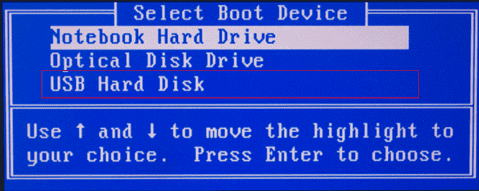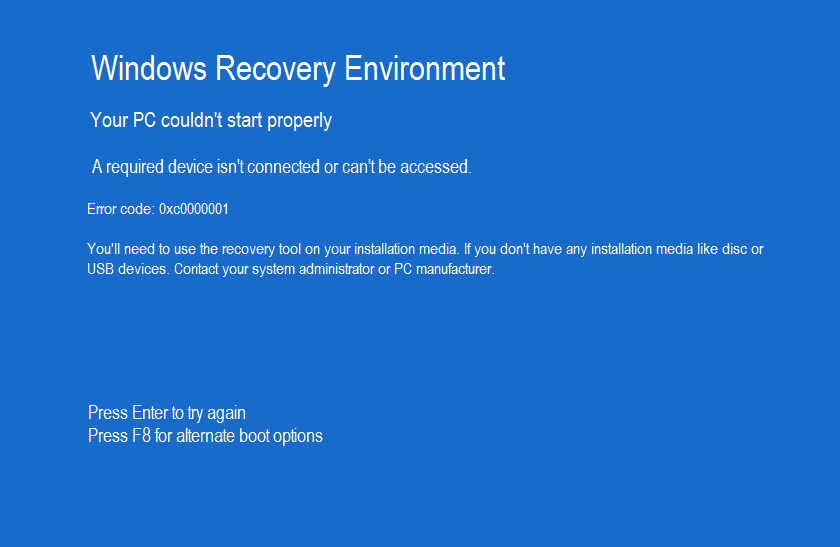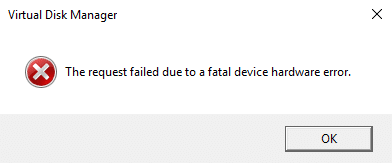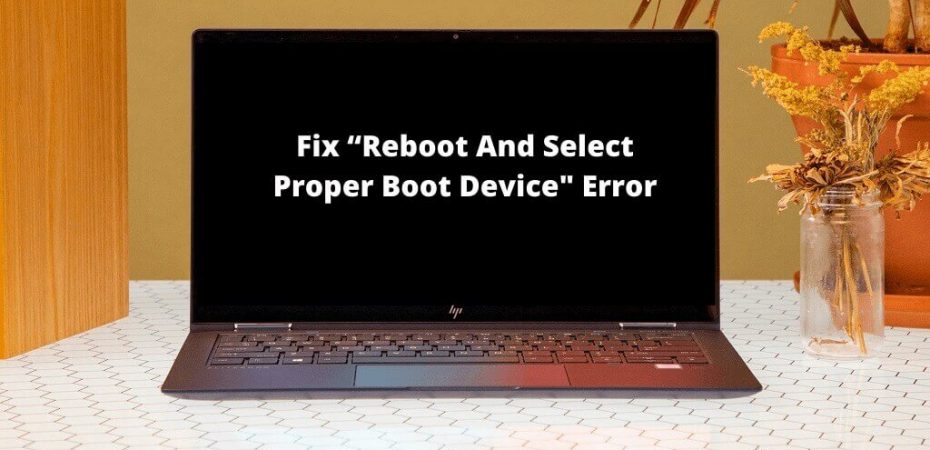For some, the “Reboot and select proper boot device” alert can be a self-explanatory issue that can be easily resolved by restarting the computer and choosing the hardware that the system requires to boot. However, if you are unsure about the meaning of the error, its cause, and how it can be resolved, then this article will help you with the best method.
The following reasons may cause the “reboot and select proper boot device or insert boot media” error prompt:
- The incorrect hard drive is selected in the BIOS.
- Windows boot loader isn’t functioning correctly or unable to detect the hard drive.
- There is an issue with the hard drive.
THINGS TO Avoid
Before we get into how to find the cause and how to fix a “Reboot and Select Proper Boot Device” error, we need to know which “solutions” to avoid or use with care. You are in danger of data loss if you do the following:
- Reset to factory settings: A factory reset returns your computer to its original settings, overwriting any data on the hard disk.
- System Recovery in Windows: This utility is frequently used when an installation fails, or data is corrupted. System Restore utilizes a previously saved “restore point” to restore the system to a previous version. However, the “restore point” might not have held current files, resulting in data loss.
- The Windows Startup Repair tool is frequently used to detect and repair startup issues. If you decide to utilize this tool, you must grasp the options you are choosing so that you do not make decisions that will harm you.
If the troubleshooting methods listed below do not work or you suspect a hardware problem, contact an expert for the best chance at restoring your data.
The initial and crucial step to resolving the issue is to identify the cause. Thankfully, in most cases, the issue is fixable.
Cause One: The incorrect hard drive is selected in the BIOS

This issue’s root cause is usually a weak battery of BIOS or wrong settings of BIOS, which cause a failure in the identification of your hard drive resulting in your PC not boot.
- To change the BIOS settings, you will first have to access the BIOS setup by pressing the right key while the system is booting. Generally, most computers have the [Delete] or [F2] as soon as the startup screen shows the prompt.
- Once you are in the BIOS Setup program, please choose to reset BIOS settings to default, which will probably fix it.
- If this does not work, examine the list of the hard drives in the BIOS; typically, a PC uses the first hard drive to boot the system. You can also assign the order in which the system looks for the boot sector in the drives.
- There is also a chance that you are getting the “Reboot and select proper boot device” error because the hard drive that the PC is using to boot has no operating system installed.
- The connected drive detection is done automatically by the BIOS; it also sets the appropriate hardware parameters, which usually does the job. However, if there is a problem, the BIOS setup program will show the drive’s incorrect size, and the hard drive will not be detected by the PC, which leads to the error in booting.
- There is usually a custom type on the hard drive in most BIOSs, which allows you to set the hardware parameters.
- You might have to set the system hard drive in some BIOS versions; this will tell the system the default boot drive. You can also turn the optional graphical boot menu off.
- Save the settings when you have made the final changes by pressing the F10 key. You will then have to restart the system.
Another tried and tested solution to fix the “reboot and select proper boot device” error is to reset the primary partition as active. Follow the steps below:
- Boot your computer with Windows installation media.
- Find and select Command Prompt from System Recovery Options or Troubleshoot.
- Type the following command in sequence and press enter after typing each command
- diskpart > select disk 0 > list partition 1 > active
- Lastly, select the boot partition number.
Cause Two: Windows boot loader isn’t functioning correctly

If you have already made sure that the BIOS settings are correct, but you are still getting the ” reboot and select proper boot device” windows 10 error while trying to boot the system, you might have to use the Windows system repair tool to fix the boot loader issue.
- This error means that the boot loader is missing in Windows 10; you will have to use a Windows installation DVD or a bootable USB drive with Windows installation files to boot the PC. You will find advanced boot options within the Start menu of the installation files, and this option will help you repair the OS or recover the data from the system.
- After selecting the language and press the “Repair your computer” option found on the Windows installer’s next page.
- Select “Choose an Option” and click “Troubleshoot,” which will allow you to fix different error messages that are preventing Windows from starting.
- When the dialog window opens, you can choose to restore the PC to the factory settings. Resort to this method only when others fail.
- For additional system repair options, select “Advanced Options” that might help you repair your Windows system.
- You can also try the Startup Repair tool to fix the Windows if the boot sector on the hard drive is the main reason why the Windows is not starting.
The Run Startup Repair usually takes a few minutes to complete. After the repair is completed, select “Restart” in the repair options. Now restart the PC after disconnect the USB drive and removing the Windows DVD from the drive.
Write A New Boot Sector To The Hard Drive
In some cases, you may have to write a new boot sector to the hard drive if Startup Repair does not fix the error. You can follow the method below to write a new boot sector:
- Boot your PC from a Windows installation DVD. Now select your language, and on the next page of the installer, select “Repair your computer.”
- Now click on “Choose an Option” ” -> “Troubleshoot” -> “Advanced Options” -> “Command Prompt.”
- To write a new master boot sector record to the hard drive, type the command: bootrec /fixmbrNow type the command: bootrec /fixboot – this command will write a new boot sector to the disk. It will also replace the previous boot loader that might be overwritten by the previous version of Windows.
- Close the Command Prompt by selecting “exit.”
- Now restart the repair options from your hard drive and not from the Windows DVD.
Cause Three: The Hard Drive Is Prompting a Hardware Error

In case your hardware is prompting a hardware error, the issue might seem more complex than it is in actuality. In most cases, defective connecting cables cause this error. Nearly all modern PC hard drives are connected with a SATA interface, and these cables are not long-lasting.
The contacts of the connections tend to get dusty or corrode with time, and even the most minor defect in the cable can cause your PC not to recognize the connected hard drive. Follow the guide below to fix the Hardware Error.
- Unplug your computer from its power source. Now disconnect the SATA cable from the motherboard and the hard drive, and clean the contacts with a lint-free alcohol wipe. Reconnect the SATA cable, and re-plug and reboot the PC. Cleaning the SATA cable usually solves the issue; however, if the issue still occurs, try changing the SATA cable.
- Suppose you believe that the SATA cables are not the root cause of the error. Then turn off your PC, remove the hardware from your PC, and connect to another PC if the hard drive with a hardware defect in its boot sector is useable.
- After installing your hard drive as a secondary drive in another PC, set the boots to order in the BIOS – this will allow the PC to boot from its functioning Windows system hard drive.
- Once the Windows starts up, your hard drive will appear as a “new drive” in the File Explorer, only if the operating system recognizes its file system.
- Open “Properties” by right-clicking the drive in the File Explorer, click on the “Tool” tab and select “Check.”
- Now choose the check that you need to run. Run a full scan, including the recovery of bad sectors.
- After the scan, try to back up the maximum amount of data possible from the hard drive. Because a defective hard drive is unsafe for storing important data as the data can corrupt with time.
- If the repair feature did not fix the error, start RUN by right-clicking the Windows logo on the screen’s left bottom corner. Search RUN and open it. Run Command Prompt as an administrator and attempt to fix the hard drive with the chkdsk command. You will highly likely be able to recover data this way.
After successfully backing up your data, replace the hard drive.
Ways to prevent the “Reboot and Select Proper Boot Device” error
To avoid future “Reboot and Select Proper Boot Device” problems, perform the following steps:
- Ensure your devices and hardware run the most recent firmware and software.
- Back up your data on a regular basis to avoid losing critical data in the event of a hardware failure.
- It would be best to exercise extreme caution when setting up new hardware or altering the BIOS settings.
- Install only reputable antivirus software to safeguard your machine from viruses and malware.
- It’s always a brilliant idea to properly shut down the computer and prevent power outages.
Fix “Reboot And Select Proper Boot Device” Error – Video Tutorial
Frequently Asked Questions — FAQs
Is there a reason why the computer prompts me to pick the proper boot device?
If a bootable device is not discovered on your PC, the message “Select Proper Boot Device” will appear. When you switch on your computer, the BIOS (Basic Input/Output System) establishes whether or not the hard drive is bootable. Assume the BIOS cannot find a bootable drive. The error notice “Select Proper Boot Device” will appear in that situation. There are several possible causes for your PC’s inability to locate a bootable device, which includes:
- Faulty hard drive.
- Outdated BIOS.
- Incorrect boot order settings.
- External devices connected.
- Corrupted operating system files.
Could you tell me where I can obtain the original Windows installation media?
You might be able to acquire the original installation media if you obtained Windows from a separate source. You can select one of the three options:
- Retail purchase.
- Manufacturer recovery partition.
- Download from Microsoft.
- Microsoft Store.
- Other sources.
What are system recovery alternatives available?
System recovery options are available on Windows computers in a variety of methods. Here are some typical approaches:
- Installing Windows from a CD or USB flash device.
- By making use of advanced startup choices.
- Making use of the built-in repair tools.
- Making use of the Command Terminal.
How do I turn off legacy boot?
UEFI Boot is the most effective method for enabling your computer’s legacy starting mode: To activate or disable Legacy Boot, follow these steps:
- Start your machine and launch the BIOS/UEFI setup utility. This is typically accomplished by hitting F2, F10, or Delete as the computer is starting. The manufacturer of your computer may have specified a separate key.
- Once in the setup utility, use the arrow buttons on your computer to proceed to the Boot tab.
- Choose “Boot Mode” or “Boot Priority” from the options.
- To deactivate Legacy Boot, uncheck the “Legacy Support” or “Compatibility Support Module (CSM)” option.
- Don’t forget to save your changes before exiting the setup program. You should now be able to boot your computer in UEFI mode.
Final Words
We hope the above mentions methods will help you fix the Reboot and Select Proper Boot Device error. To save yourself from unnecessary trouble, ensure that all of your important data has cloud storage back up at all times.
Read Also
- How to Fix “Windows Smartscreen Can’t Be Reached” Error
- How to Fix Windows 10 Audio Services Not Responding Issue?
- How to Fix Avast Not Opening on Windows?
- How to Change Your Account Name on Windows 10
- 7 Solutions To Fix SD Card Recognized On Windows
- How to Change a File Extension in Windows
- How To Uninstall Internet Explorer Windows 10
- Windows Defender vs Avast
- How To Fix Printer Driver is Unavailable Error
- How to Fix “System Thread Exception Not Handled” Error on Windows 10
- How to Fix Origin Error 327683:0

